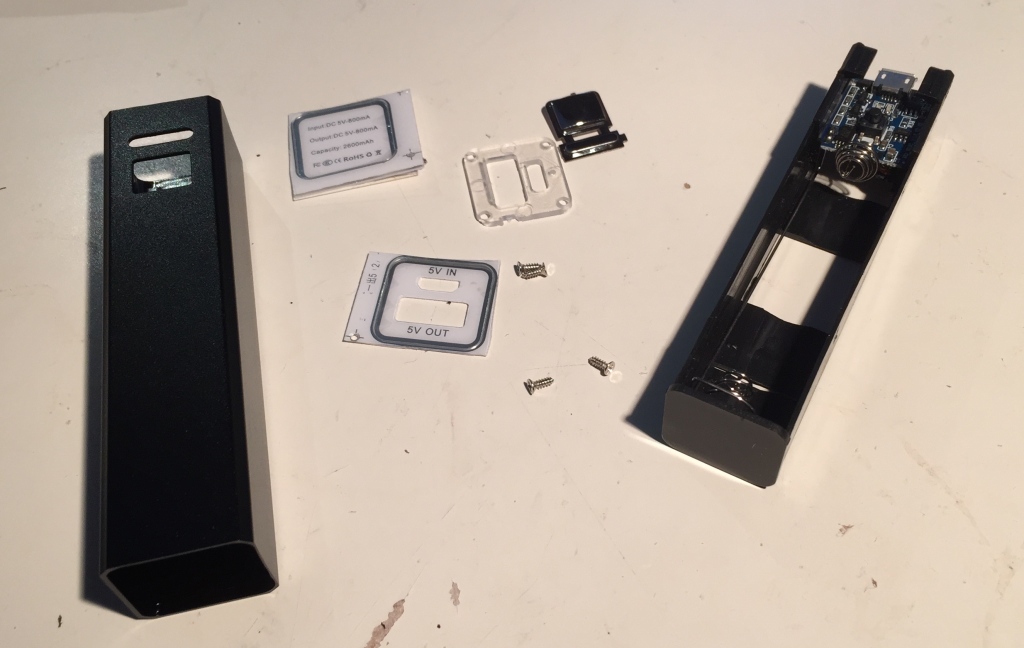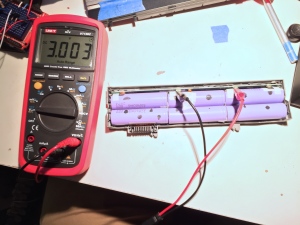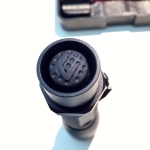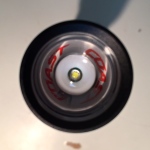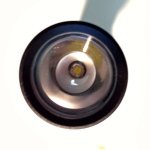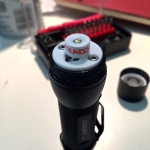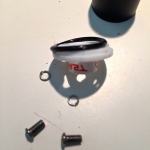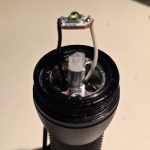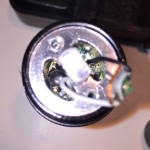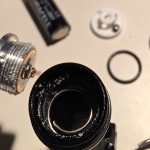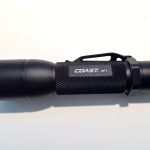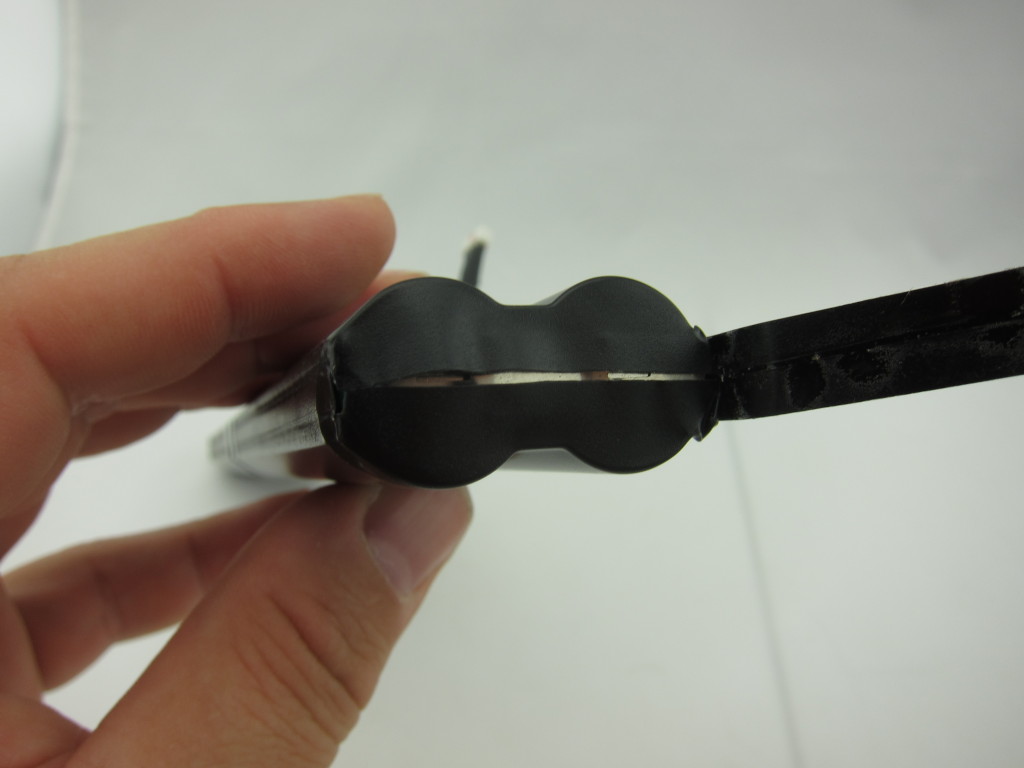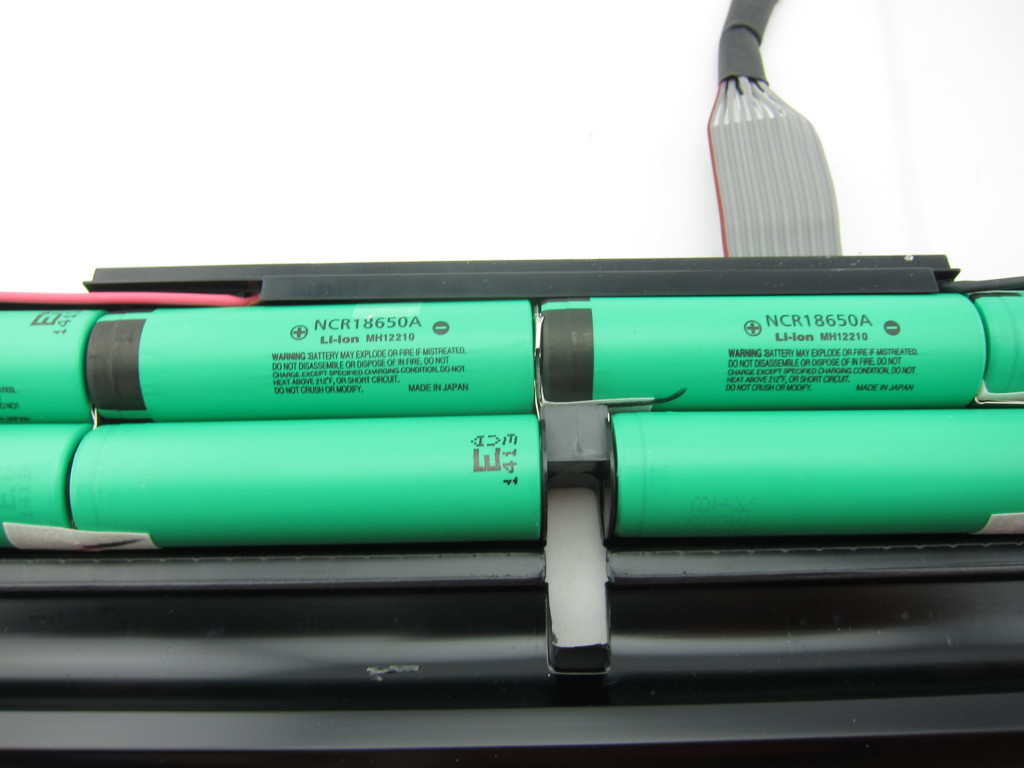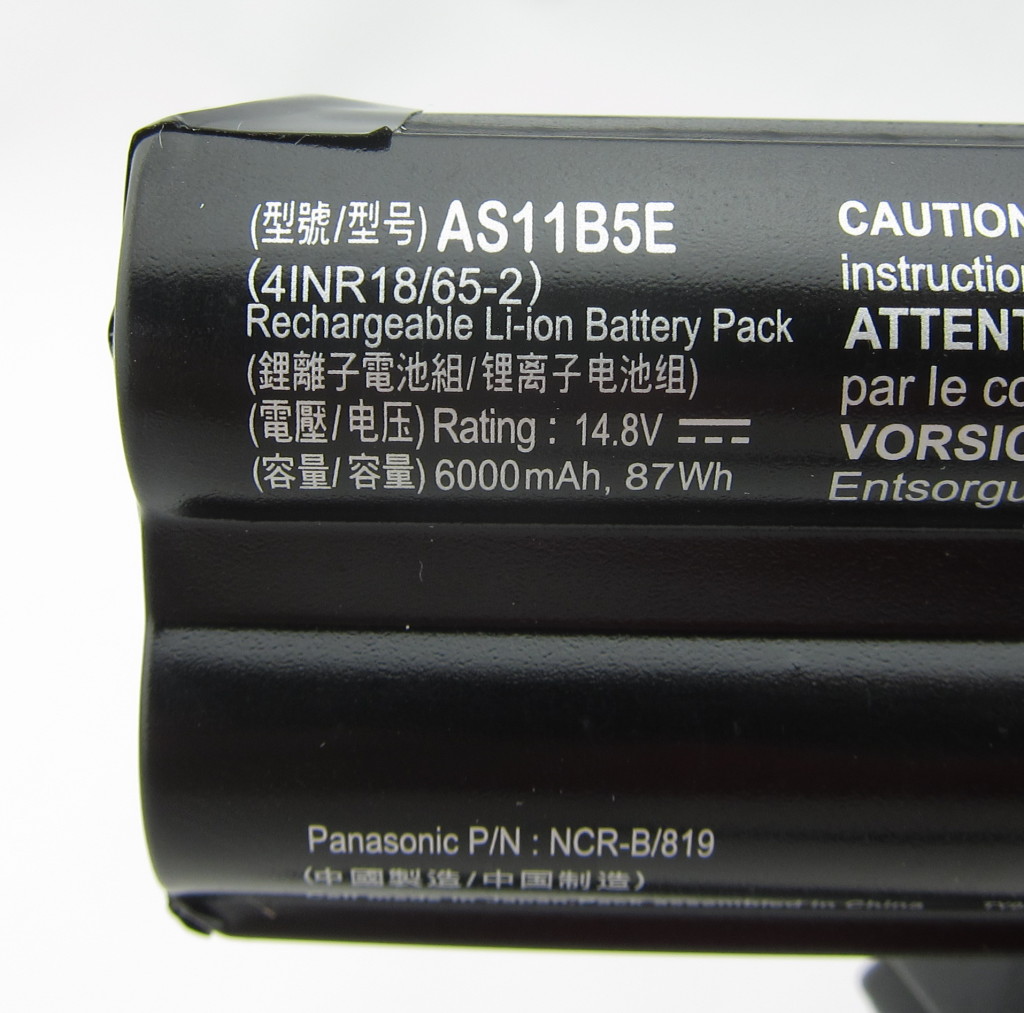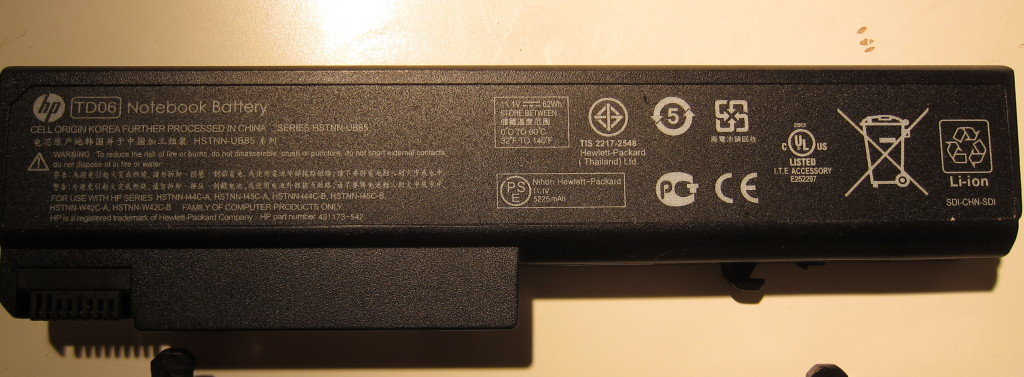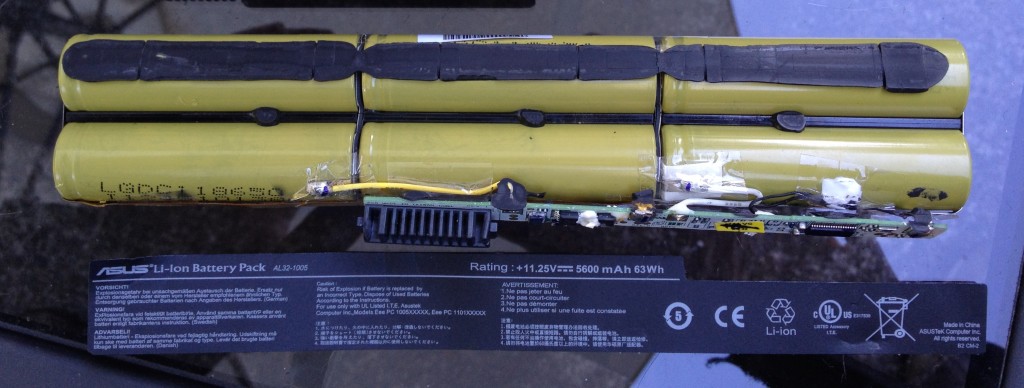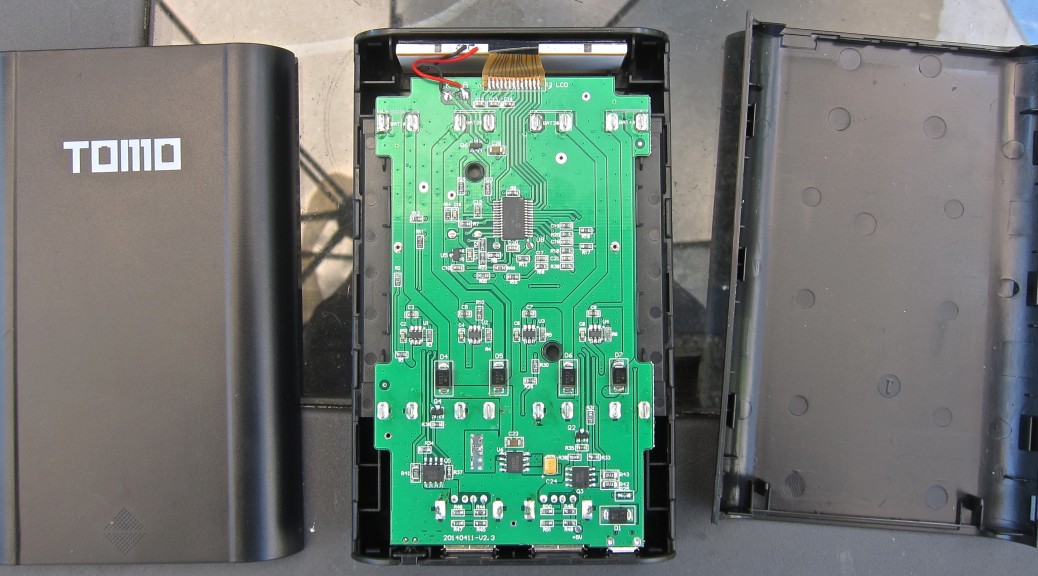I just posted a teardown and tests of a $2.50 DIY USB PowerBank Teardown and Tests. Check it out to see what I found.
Category Archives: Teardowns
A look inside of the devices we use
Dell XX326 11.1V 60Wh Battery Pack Teardown
I picked up a lot of ten Dell XX326 6-cell 60Wh battery packs from an eBay seller for about $4.50/pack. The seller described them as untested surplus, and based on the presence of unworn external labels in the photos on the listing, I thought they might be unused packs and hoped I could turn around and sell them individually for a profit.
No such luck. The packs had more physical wear than I expected. When I hooked them up to PackProbe, I only got data out of two of them without hassle and the data they provided seemed to have problems, for example, reporting design capacity as 0. With a little work, I got one more to spill its secrets. A couple more would ACK a query at their address, but that was it, and the rest gave nothing at all.
I decided to tear apart a few of them. When I got one of them open and measured with a multimeter, I found all the cells were flat, 0V. The next one was a little better, but not great.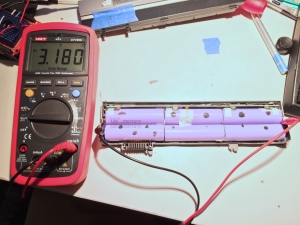
3.18V, for 3 banks in series. Not looking good. Lets see what the individual banks registered.
 Hmm, one bank measures 2.86V. That’s not bad. The other two banks must be junk though, with a combined voltage of less than 0.4V.
Hmm, one bank measures 2.86V. That’s not bad. The other two banks must be junk though, with a combined voltage of less than 0.4V.
Wait a second, 3.0V that’s not bad, hmmm…
Yikes!!! One bank of cells has reversed polarity, in a really big way. I double checked my connections, but I still got the same result, -2.69V!
I tore into another 6 packs. One was nearly flat, with each bank just over 0v. The rest had at least one bank of cells at a reasonable voltage, with the remaining cells being low, flat, or slightly reversed.
It looks like all the packs are ~4-5 years old, and the packs I could get data out of each reported less than 40 cycles. I have to wonder what happened to these packs that they are in such crummy shape, or if the problem is with the pack design/engineering. There are also some manufacturing issues, I think two of the packs had welds break loose, without tearing the nickel conductor strips.
After pulling the individual cells out of three of the packs I’ve opened I’m even more baffled. All of them had at least one cell with failed spot welds. The first pack had all 0v cells, as expected. The second I thought would have two good cells, but it turned out only one cell in the bank was good. The other was flat. The third I thought had two good banks, but once the cells were separated, only one in each of those pairs was good. I think bad connections may have played some role in cell failures.
One theory: Cells paired with poorly connected cells failed because they were overused. I also wonder if some cells may have broken internal connections.
I’m holding off ripping apart the rest of the packs I’ve already opened, because I’m curious if I can get the battery management circuit to give up some data.
Coast HP1 Flashlight Quickie Teardown
 I picked up a Coast HP1 1xAA LED flashlight from Amazon for $9.99 and thought I’d post photos from a quick teardown.
I picked up a Coast HP1 1xAA LED flashlight from Amazon for $9.99 and thought I’d post photos from a quick teardown.
Acer AS11B5E (4INR 18/65-2) 14.8v 6000 mAh 84wH Battery Pack Teardown
I’ve been trying to get my hands on some higher capacity cells than the 2,600 mAh Samsung cells I’ve accumulated so many of, so I’ve been looking through ebay listings for reasonably priced new battery packs and then checking the photos, descriptions, and even the web for specs and other information that will help me figure out whats inside.
I recently ordered a Acer AS11B5E (4INR 18/65-2) battery pack fro $21.99 with free shipping from In And Out Electronics. They shipped it out quickly and I received it today.

As you can see, its not like most packs made with 18650 cells. Rather than a tough case with connectors and latches for easy installation and removal, this pack has a thin flexible case ribbon cable with a connector. Its clearly meant to be an internal battery that isn’t swapped, but replaced when it wears out. This has been Apple’s approach for about 6 years now, but Acer is using standard 18650 cells, while apple is using custom sized pouch cells.
Apparently the laptop this was designed to power was an absolutely huge media laptop with a 18.5″ display. Crazy!
This pack was incredibly easy to open! .Getting the batteries out of most packs is like shelling a crab, or getting the meat out of a ripe coconut, this was like shelling shrimp, or a soft-shell crab. I just had to pull off strips of tape to get to the sweet sweet battery meat inside.
Look at those juicy cells! Those are Panasonic NCR18650A cells with a nominal 3,100 mAh capacity! Even better than I expected, and I’ve got 8 of them!
I was hoping for 2,800 or 2,900 mAh cells, based on the specs for the pack that I was able to find which rated it at 14.8v and 84Wh, so the extra nominal capacity was a nice surprise. I’m not sure the source of the discrepancy though. It could simply be that Acer derates the cells slightly.
Another explanation is that these cells tolerate discharges down to 2.5v (most cells should only be discharged down to ~3v) but the capacity between 3v and 2.5v is less than 10% of the total. From the specs for Panasonic NCR18650A cells, it looks like the capacity is ~2,950 mAh if you only discharge to 3v. Avoiding maximum discharge also increases the useful life of the cell.
In any case, in retrospect, some of the clues were there before I opened the pack.
- 4INR18/65-2: A series of four cells 18mm in diameter and 65mm long (aka 18650), with two cells in parallel.
- 14.8v: 4 cells in a series works out to a nominal cell voltage of 3.7v (panasonic actually lists 3.6 as the nominal cell voltage for these batteries, but I think thats because of the discharge profile that reaches lower voltage than typical for cells of this chemistry).
- Panasonic P/N : NCR-B819: This suggests that the pack is manufactured by Panasonic, and so not a surprise that it includes panasonic cells.
Once I had the pack apart, I checked the voltage and found that it only measured 7.8 volts or so, or a bit under 2v for an individual cell. With ordinary lithium ion batteries, that would be a worryingly low voltage. I’m hoping that its less of an issue with these cells. I immediately applied a low charging current (200mA) to bring the pack up to ~3V.
It appears to me that this pack was manufactured in June of 2011, or a bit over 3 years ago. Thats a long time to sit without being recharged, though I’ve had older packs that have discharged less.
I’m keeping the circuitry of the pack intact so I can try to read out information from the battery management board. Once I’ve done that, I’ll put these cells through a few charge/discharge cycles and see how they perform.
Tesla Model S Battery Pack Teardown
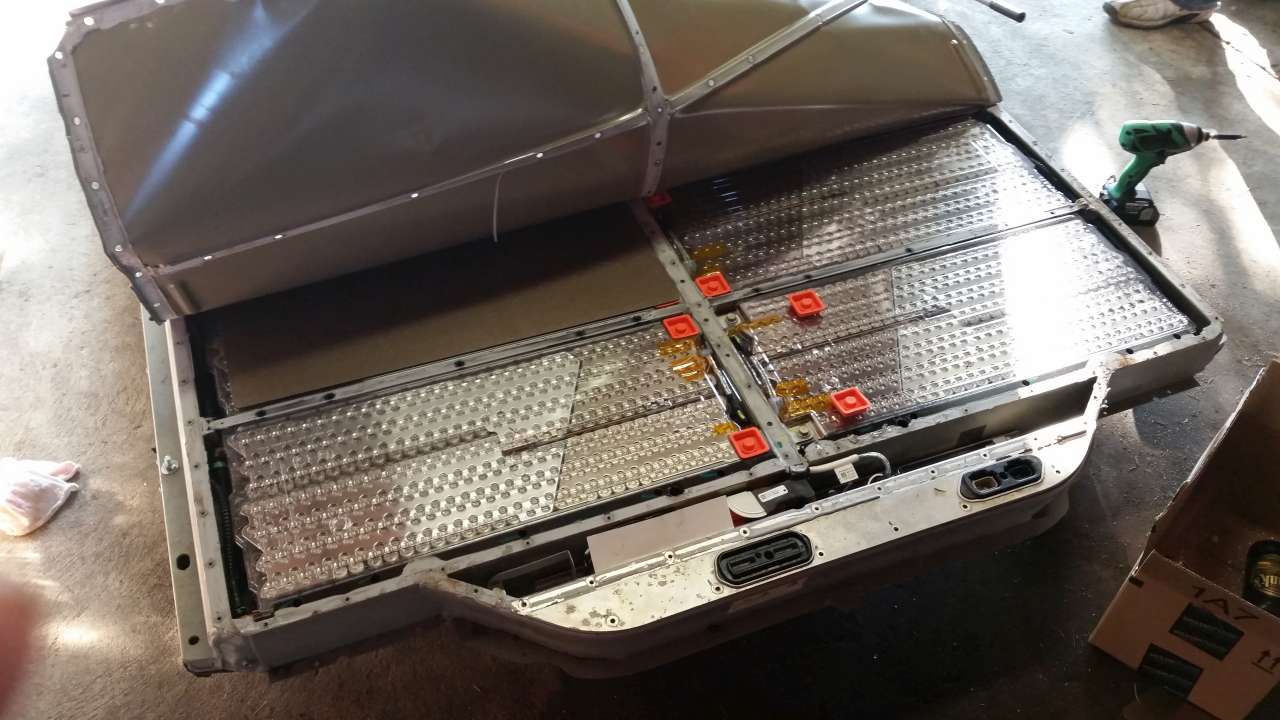 Someone bought a scrapped battery pack from a Tesla Model S to use for a project and is posting about what they found inside.
Someone bought a scrapped battery pack from a Tesla Model S to use for a project and is posting about what they found inside.
HP TD06 (Series HSTNN-UB85) 11.1V 62Wh battery pack teardown
I picked this HP TD06 (Series HSTNN-UB85) 11.1V 62Wh battery pack up at RePC for $1 at the same time I got the ASUS AL32-1005 pack I posted about earlier. Based on the nameplate pack voltage, it was one of only a handful that used newer 3.7v lithium ion cells out of the hundred or more packs they had.
It was also the only of TD06 pack using newer cells; there were 3-4 labeled with a 10.8v voltage.
Peeling the label back gave a tiny peak at the cells. I was able to separate the two halves of the pack case with a thin bade, pliers and a bit of elbow grease.
The lavender-wrapped cells are clearly made by Samsung (not a big surprised, given that the pack label indicated that the cells were made in Korea. The remaining marking is ICR18650-28A. These cells are rated for 2800 mAh of charge capacity, which isn’t a surprise given the 62Wh claim. Unfortunately, they must be charged to 4.3V to achieve that capacity. When charged to the more common 4.2V, they have about 7.5% less capacity.
The battery management seems to be divided between two chips with a lot of pins. One is labeled M37512, FC024, J2C5D. The other is 20020 ??05. The first chip appears to be an 8-bit M37512-FC MCU from Renesas intended for…battery pack applications. I’m not sure what the second chip appears to be a RS20020. This is a companion chip for battery pack applications. I can’t find information on what it does, exactly, but it seems to have connections to each cell, and to the MOSFETs that can switch the flow of current to or from the pack on and off.
ASUS AL32-1005 11.25V 5600mAh 63Wh battery pack teardown
I picked this ASUS AL32-1005 11.25V 5600mAh 63Wh up at RePC for $1. Based on the nameplate pack voltage, it was one of only a handful that used newer 3.7v lithium ion cells out of the hundred or more packs they had.
Labels for the positive and negative contacts were, helpfully, molded into the plastic.
Removing the plastic sticker exposed part of the cells, but to get them out, I had to rip the plastic case apart, with some pliers and elbow grease. Pack voltage is reasonable, so its unlikely that any of the cells are completely shot, but at the point, I don’t know how much use they’ve suffered. I’m leaving the circuit intact for now so I can try and read out the smart battery information so I can see if there is any correlation between that and the results of testing the individual cells.
The cells themselves look like they are made by LG. They are all labelled LGDC118650. All the onces I can see also have I1245xxxxxx, MED45DxC1, where the ‘x’ represents a position with a number or letter that varies from cell to cell.
From what I can tell, the manufacturer is LG, and they are 3.7V, 2,800mAh cells, which is pretty much what I expected based on the specs printed on the outside. One of the only english-language pages I found mentioning these cells suggested they had a charge termination voltage of 4.35v, but I’ve found nothing else to corroborate that.
The battery management chip is labeled bq 20Z45, 95K, CP7L, which looks like the TI bq20z45, an all-in-one battery management chip.
Just Published: Review of the TOP 5A CC CV LED Drive Lithium charger Power Step-down Module W/ USB Voltmeter | Power Cartel
I just published a review of the “TOP 5A CC CV LED Drive Lithium charger Power Step-down Module W/ USB Voltmeter,” a DC-DC power supply and battery charger module I recently purchased from ebay.
Just published: Tomo V8-4 / Soshine E3 DIY USB Power Bank
For our first teardown, we take a look inside the Tomo V8-4 (aka Soshine E3) USB power bank.
